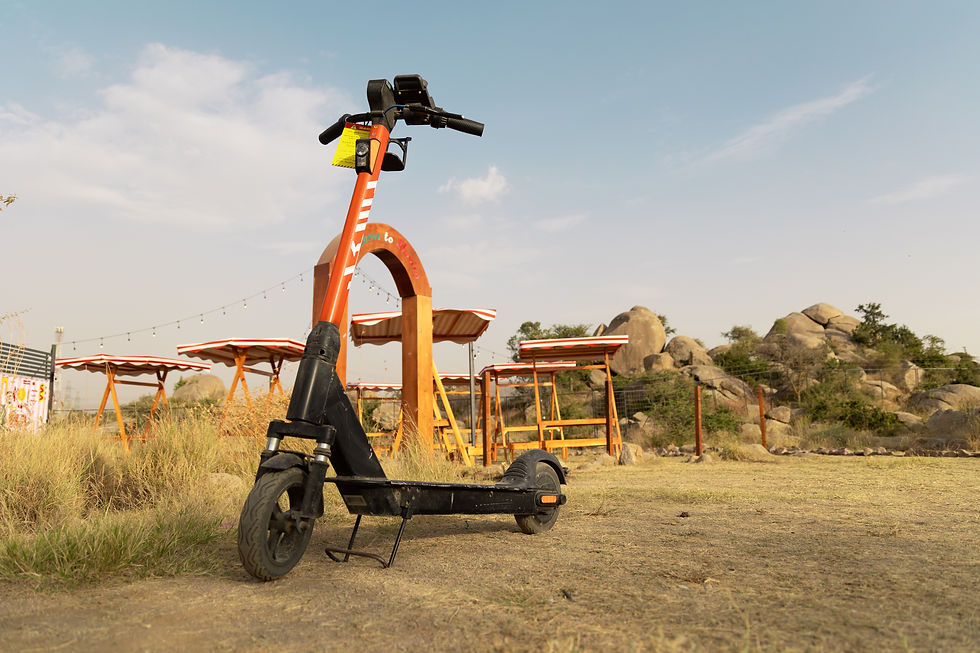Mobility App
- Ammar Asel
- Oct 1, 2023
- 3 min read

In recent years, the emergence of innovative technologies has significantly revolutionized various aspects of modern living, one of the most prominent being the transportation sector. Mobility apps, in particular, have transformed the way individuals navigate and commute within urban landscapes. These applications have ushered in a new era of convenience, efficiency, and accessibility, offering users a seamless and interconnected experience in their daily travels. As the world continues to embrace the digital age, mobility apps have become an integral part of the contemporary lifestyle, redefining the way people move and interact with their surroundings.
What does the term "mobility app" refer to?
A "mobility app" refers to a sophisticated software application tailored to cater to the multifaceted requirements of modern transportation. These applications integrate a diverse range of features that streamline the process of navigating through different modes of travel, including but not limited to, ride-sharing services, public transit systems, real-time traffic updates, and other means of facilitating mobility. By utilizing cutting-edge technology, these apps aim to enhance the overall transportation experience for users, providing convenience, efficiency, and often sustainable travel options.

What is the purpose behind the utilization of mobility apps?
Mobility apps serve the purpose of providing efficient and convenient solutions for various aspects of transportation and navigation. These applications are designed to streamline the process of accessing transportation services, offering users a range of options including ride-sharing, public transit information, bike-sharing, and more. They aim to enhance the overall mobility experience by facilitating easier access to transportation, reducing travel time, and providing real-time information on routes, schedules, and alternative modes of transportation. Additionally, these apps often integrate features such as navigation guidance, traffic updates, and fare estimation, contributing to a more seamless and user-friendly travel experience.

examples of a mobility app:
One example of a mobility application is a ride-sharing platform, such as Uber or Lyft, which allows users to book rides from one location to another through a smartphone application.
Another prime example of a mobility application is the Bskl app, which offers various micro-mobility services, including bike-sharing and scooter-sharing options. The Bskl app allows users to locate nearby available bikes or scooters, reserve them, and then pay for their usage all within the application. This not only enhances the convenience of transportation but also promotes sustainable mobility options, contributing to reduced traffic congestion and environmental impact. Through the Bskl app, users can seamlessly access efficient and eco-friendly modes of transportation, aligning with the growing demand for convenient and sustainable mobility solutions in urban areas.

Active mobility:
Active mobility generally refers to any form of transportation that involves physical activity, such as walking, cycling, or even skateboarding. It is often contrasted with passive modes of transportation, which involve the use of vehicles like cars or buses. Active mobility promotes a healthy lifestyle and is environmentally friendly as it reduces the carbon footprint associated with traditional transportation methods. It also contributes to increased physical activity, which can have numerous health benefits, including improved cardiovascular health, enhanced mental well-being, and reduced risk of chronic diseases. Promoting active mobility is often considered a key strategy for sustainable urban development and improved public health.

why is active mobility important?
Active mobility is important for several reasons, primarily due to its positive impacts on both individual well-being and the environment. Here are some key reasons why active mobility is crucial:
Health Benefits: Engaging in physical activities like walking or cycling as a part of daily transportation helps individuals stay physically active, contributing to improved cardiovascular health, increased muscle strength, and enhanced mental well-being. Regular physical activity has also been linked to a reduced risk of various chronic diseases such as obesity, diabetes, and heart conditions.
Environmental Sustainability: Active mobility significantly reduces carbon emissions and air pollution compared to traditional transportation methods that rely on fossil fuels. By encouraging walking and cycling, active mobility contributes to a reduction in greenhouse gas emissions, fostering cleaner and more sustainable environments for communities.
Urban Development: Promoting active mobility can lead to the development of more pedestrian-friendly and bike-friendly urban spaces. Building infrastructure that supports walking and cycling can enhance the overall livability of cities, creating more vibrant, accessible, and healthier communities.
Reduced Traffic Congestion: By encouraging people to choose active mobility options for shorter trips, cities can reduce traffic congestion and related problems such as time wastage and increased fuel consumption. This can lead to more efficient transportation systems and improved overall accessibility within urban areas.
Encouraging and investing in active mobility can have far-reaching positive impacts, ranging from individual health and well-being to environmental sustainability and the overall livability of cities and communities.


Comments